How to remove the motor on a Bosch washing machine?
 Knowing how to independently remove the motor of a Bosch washing machine is important for every user of the machine. Without this manipulation, you won’t be able to repair and replace the engine yourself; you’ll have to pay a technician or buy new equipment. Meanwhile, the procedure is not particularly complicated - even a novice master can figure it out. You just need to prepare the tools in advance and follow the instructions.
Knowing how to independently remove the motor of a Bosch washing machine is important for every user of the machine. Without this manipulation, you won’t be able to repair and replace the engine yourself; you’ll have to pay a technician or buy new equipment. Meanwhile, the procedure is not particularly complicated - even a novice master can figure it out. You just need to prepare the tools in advance and follow the instructions.
Features of engine removal
Removing the motor from a washing machine is many times easier than removing bearings or disassembling the tank. But this standard procedure also requires knowledge and skill, since careless actions can lead to disastrous consequences. To avoid “surprises”, it is recommended to act in a strictly specified order:
- disconnect the washing machine from the power supply and water supply;
- move the unit away from the wall or turn it “backwards” towards you;
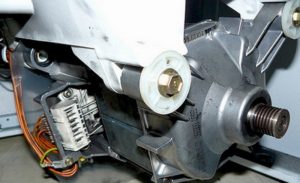
- remove the back cover of the case by unscrewing the corresponding bolts;
- remove the drive belt by pulling it towards you and turning the pulley wheel;
- find the engine located under the tank;
- Use a T-20 socket head to tighten the two self-tapping screws holding the electric motor;
- carefully place the washing machine on the side on which the detergent tray is located;
- disconnect the grounding and the terminal with wires from the engine;
- use a screwdriver to pry off the motor, moving it forward;
- remove the engine from the grooves and, rocking, remove it from the housing.
When disassembling the washing machine, follow safety precautions - wear gloves and disconnect the equipment from communications.
Be prepared for the fact that the electric motor is heavy - it weighs several kilograms.The engine removed from the housing is placed in a dry and level place. It is now ready for diagnosis and repair.
Changing carbon brushes
Most often, motor repair involves replacing the brushes. They fail faster, or more precisely, their carbon tips are erased during the operation of the washing machine, smoothing out the friction force emanating from the device. It is not difficult to install new ones instead of old ones - you just need to find the rods, dismantle them and replace them.
It is recommended to record all your actions on a photo or video camera in order to avoid errors and incorrect connections during reassembly.
It is not necessary to dive headlong into studying the design of the engine. Carbon brushes are easy to find; they are located directly on the motor, on both sides of the housing, and have a simple design. It is difficult to confuse them - these are rectangular cases, with an electrical wire and a spring attached.
Disconnecting the electric brushes from the body is not difficult. We proceed like this:
- use a flat screwdriver to pry up the terminal of the supplied wiring and unhook it;
- move the brush contact down;
- compress the spring;
- take out the brush.
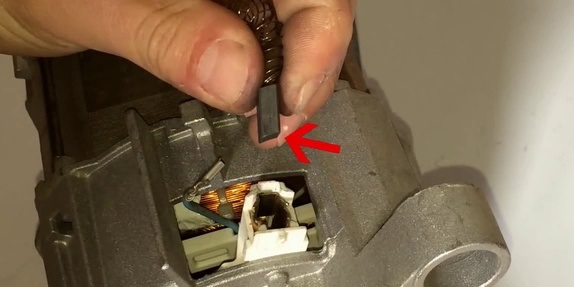
Don’t rush to throw away the brushes; they are probably intact and the problem is not with them. To assess the condition of the rods, it is necessary to disassemble each case, inspect and measure the carbon tips. If the “coals” are less than 1.5-2 cm long, then replacement is necessary. The whole ones return to their place.
Electric brushes are always replaced in pairs, even if the “coal” is practically not worn off on the second one. A replacement is selected based on the serial number of the washing machine or engine. Ideally, you should remove the old rods and bring them to the store for a sample. You cannot take parts at random - the configuration, size and design of the brushes depend on the Bosch model and vary greatly.
Electric brushes are always replaced in pairs, even if one of them has a tip larger than 2 cm.
New carbon tips are installed in the reverse order:
- insert the first brush into the engine traverse from where the old one was removed;
- compress the spring and insert it into the seat;
- fix the terminal in the clamps of the upper part;
- move the terminal to the wire, securing the brush.
All that remains is to put the connector and wiring onto the terminal. Then we take the second brush and fix it on the engine in the same way. At the “finish” we check the reliability of the contacts and fastenings, after which we return the motor to its place according to the instructions described earlier. Don’t forget to start the washing machine to evaluate the performance of the engine. If the machine hums smoothly and the drum rotates, then everything is done correctly.
The washing machine motor is a key component that you need to be able to test and repair. This way you can extend the life of the machine and save a lot of money.
Interesting:
Reader comments
- Share your opinion - leave a comment


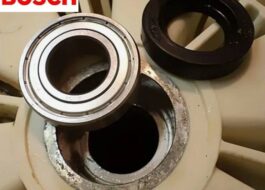

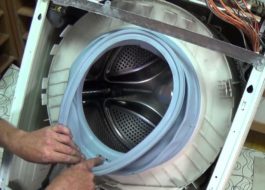

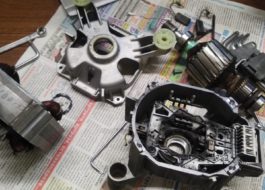














Add a comment